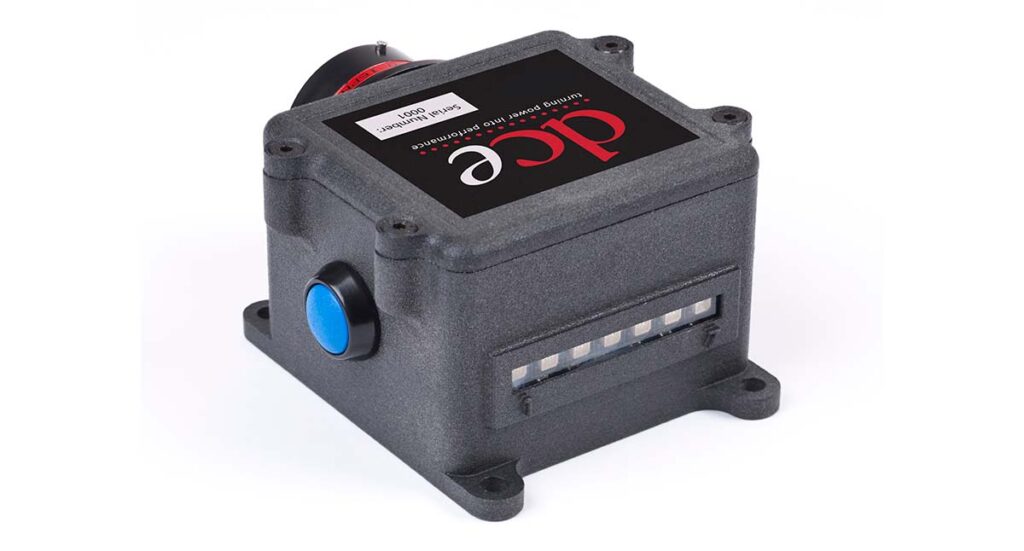3D printed electrical enclosure, an introduction
CRP USA together with DC Electronics have developed an electrical enclosure using the technology of Industrial 3D printing and Windform composite materials. DC Electronics is a company based in the UK and in Mooresville, North Carolina, US. It is one of the leading manufacturers of custom built electrical systems for the motorsport industry.
CRP USA with the service of additive manufacturing with Windform materials supported DC Electronics in the design and construction of a custom electrical enclosure for the NASCAR racecars.
The electrical enclosure for NASCAR racecars
The NASCAR Sprint Cup championship moved to electronic fuel injection for the control of their engines in February 2012. Part of the mandated electrical system included a relay control box to switch a 12v power supply to the various sensors, actuators and fuel pumps. The relay box contains electro-mechanical devices (relays) and two circuit breakers.
In total the device switches power to 7 individual circuits so already 5 channels contained no circuit protection. Early problems with circuit breakers tripping has led to many teams bypassing these devices, leading to no circuit protection at all.
The DC Electronics’ unit is manufactured from solid state components so no moving parts are effected by vibration. Each circuit is pre-programmed with the maximum safe current that the wiring loom can take, should the current exceed this (due to accident damage or faulty component) the output is switched off before damage can occur to the wiring harness.
In addition to this, each circuit has a bi-colour LED assigned to it on the outside wall of the box, this is used for rapid fault finding of any potential problems. The LED displays if the circuit is off, on or in a fault condition.
The Windform LX 2.0
The Windform LX 2.0 was used to enclose electronics (Windform LX 2.0 is now replaced by Windform LX 3.0). The mechanical features of Windform LX 2.0 make it the right material in this kind of application. Windform LX 2.0 has a good tensile strength thanks to the glass fiber reinforcement. It has a heat resistance with a melting point of around 180 °C. It has a natural black color and the finished surface can be smoothed to Ra = 1.5 microns. It is also non-conductive. This represents a crucial feature in building the electrical enclosure.
The main criteria that the component had to satisfy was being as light as possible whilst the shape allowed it to be retro-fitted to existing mounting brackets.
The component had to be strong enough to resist damage when being fitted to the mounting cradle, whilst also able to handle and dissipate any heat generated by the circuit board.
DC Electronics tested previously a machined billet box and a carbon composite box.
The billet box was heavy and expensive to produce. The carbon composite box also proved costly and was not best suited to small changes in design as the project progressed, as this necessitated new molds and patterns to be made for each change.
CRP USA offered DC Electronics to build the part with Windform materials and 3D Printing. The solution was the most suitable and the final Windform LX 2.0 component proved to be lighter in weight than both the billet and carbon composite boxes.
Advantages of using Windform in the construction of electrical enclosure
The biggest advantage for DC Electronics to use Windform LX 2.0 and industrial 3D printing service was the rapid delivery of production suitable parts at a sensible price. In addition any design changes could be made quickly and easily to the CAD model. “With this particular project we have found no limiting factors”, states David Cunliffe, Managing Director and Co-founder of DC Electronics.
“The biggest factor that pushed us towards Windform was the speed in constructing the parts, the mechanical features of the material and the ease of delivery”, said David Cunliffe.
“Moreover CRP USA also carried out the design of the enclosure for us and this was a useful value added service and will now lead us to looking to CRP USA and Windform materials for future products that we have in development.”
Windform LX2.0 and 3D Printing have achieved the final result successfully. The electrical enclosure was tested on racetrack and the component was fully reliable. Thanks to the technology of additive manufacturing and Windform materials it was possible for DC Electronics to have in short time a reliable electrical enclosure for the NASCAR racecars.
